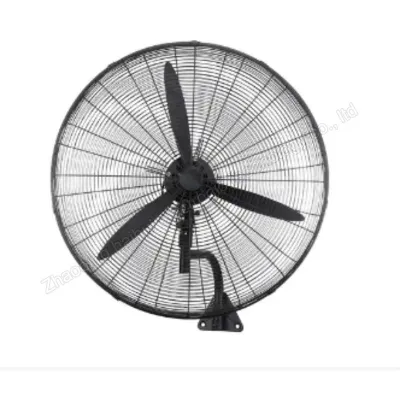Is cooling fan effective?
Cooling fans, a ubiquitous and cost-effective solution for temperature regulation, have long been a go-to choice for individuals seeking relief from heat. This article explores the effectiveness of cooling fans, examining their mechanisms, advantages, and considerations to help users make informed decisions about their use in various settings.
1. Understanding Cooling Fans:
1.1 Mechanism of Action:
Cooling fans operate on the principle of convective cooling. By moving air across a surface or space, fans facilitate the evaporation of moisture from the skin, providing a perceived cooling effect. They also help dissipate heat from electronic devices and machinery.
2. Advantages of Cooling Fans:
2.1 Affordability:
Cooling fans are a cost-effective solution compared to air conditioning systems. They are an accessible option for individuals and businesses seeking temperature control without a significant upfront investment.
2.2 Energy Efficiency:
Cooling fans generally consume less energy than air conditioning units. This makes them an environmentally friendly choice and can result in lower electricity bills for users.
2.3 Portability:
The portability of cooling fans adds to their appeal. From desk fans to tower fans and handheld options, users can easily move and position fans to target specific areas, providing localized cooling.
2.4 Versatility:
Cooling fans come in various sizes and designs, catering to diverse needs. Whether for personal use, large spaces, or specific applications like cooling electronic equipment, there is a fan suitable for different scenarios.
3. Considerations for Effectiveness:
3.1 Room Size and Placement:
The effectiveness of a cooling fan depends on the size of the room or space it is intended to cool. Proper placement is crucial to ensure air circulation and maximize the cooling effect.
3.2 Air Circulation:
Fans are most effective in spaces with good air circulation. Ensuring that there is an inlet for fresh air and an outlet for warm air allows the fan to optimize its cooling capabilities.
3.3 Humidity Levels:
Cooling fans perform best in low humidity environments. In areas with high humidity, the evaporation process is hindered, reducing the perceived cooling effect.
3.4 Personal vs. Whole-Room Cooling:
Different types of fans serve different purposes. Personal fans are ideal for individual use, while larger fans or oscillating fans are better suited for cooling entire rooms.
4. Supplementing with Other Cooling Methods:
4.1 Combining with Air Conditioning:
In some cases, using a cooling fan in conjunction with air conditioning can enhance efficiency. Fans can help distribute cooled air more evenly, allowing users to set their air conditioners at slightly higher temperatures.
4.2 Use of Ice or Cold Packs:
Some users enhance the cooling effect of fans by placing ice or cold packs in front of them. This DIY approach can provide a temporary boost in cooling, especially in smaller spaces.
Cooling fans, with their simplicity and versatility, offer an effective and budget-friendly solution for temperature control in various settings. Their effectiveness is influenced by factors such as room size, placement, and environmental conditions. While they may not replace the cooling power of air conditioning in all situations, cooling fans remain a valuable asset for personal comfort and energy-efficient cooling solutions, contributing to a more sustainable and comfortable living or working environment.
71
0
0



Comments
All Comments (0)